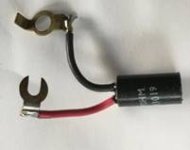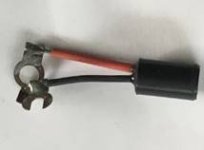I have a 1959 100-6 that came with a square body fuel pump (Moss says are early). I switched to negative ground not knowing to switch the diode. I measured ohms across the diode ( with it removed) and it is zero. I assume burned out. I ordered a late model solid state pump to replace it but would like to use this as spare. The diode reads:
EROID
0,047uF
400 V -
250 V ~
,,k"" D3
0,047/400
The Moss diode looks different. Any ideas where I can get the one I have or is it wrong type? The points I can get from Moss I guess. Did the early square bodies have diodes?
Thanks,
Chuck
EROID
0,047uF
400 V -
250 V ~
,,k"" D3
0,047/400
The Moss diode looks different. Any ideas where I can get the one I have or is it wrong type? The points I can get from Moss I guess. Did the early square bodies have diodes?
Thanks,
Chuck

 Hi Guest!
Hi Guest!

 smilie in place of the real @
smilie in place of the real @
 Pretty Please - add it to our Events forum(s) and add to the calendar! >>
Pretty Please - add it to our Events forum(s) and add to the calendar! >> 





